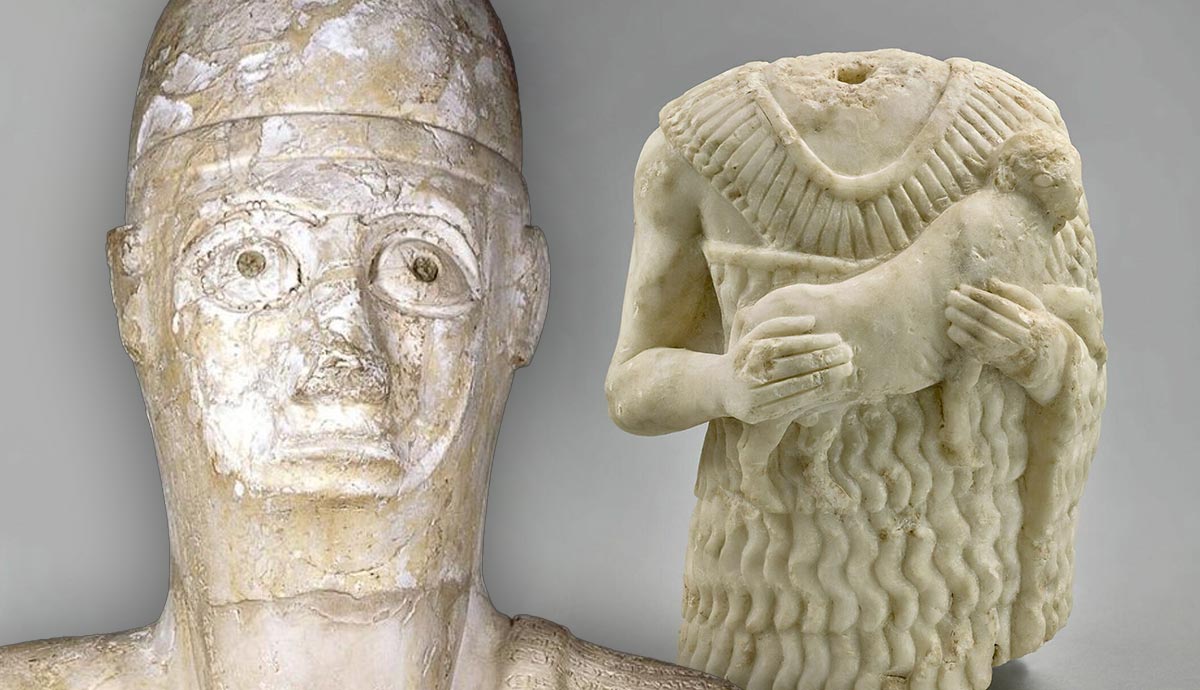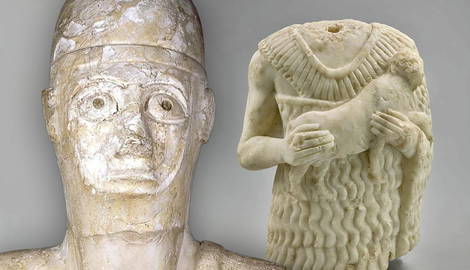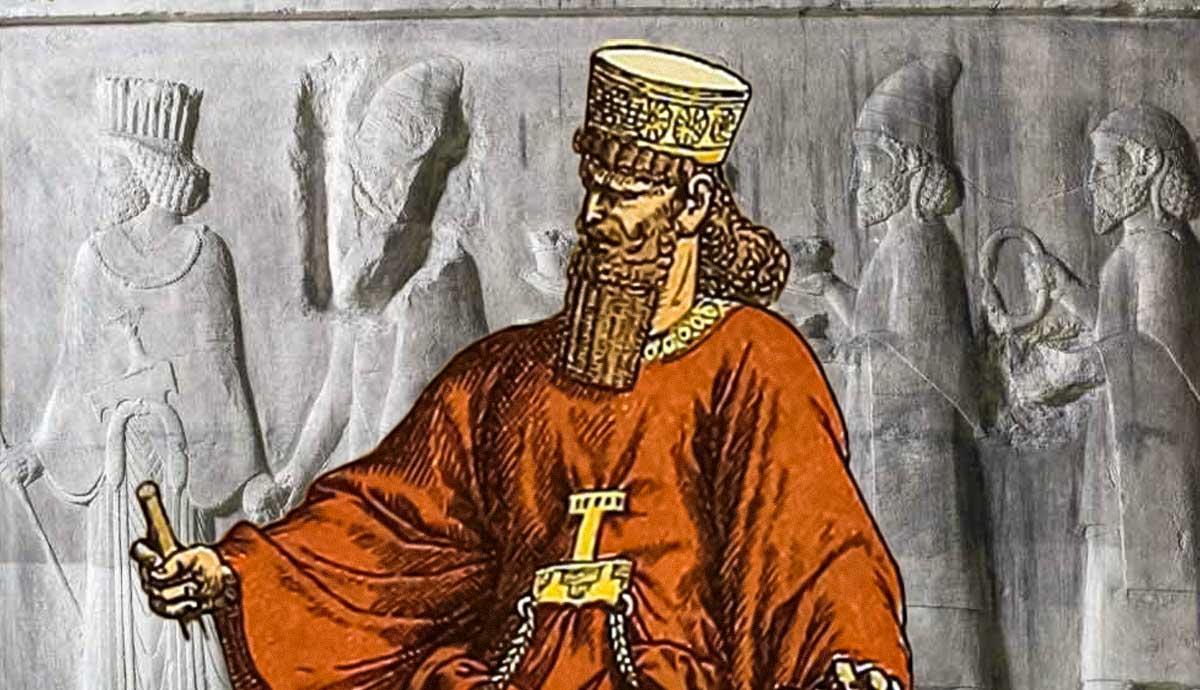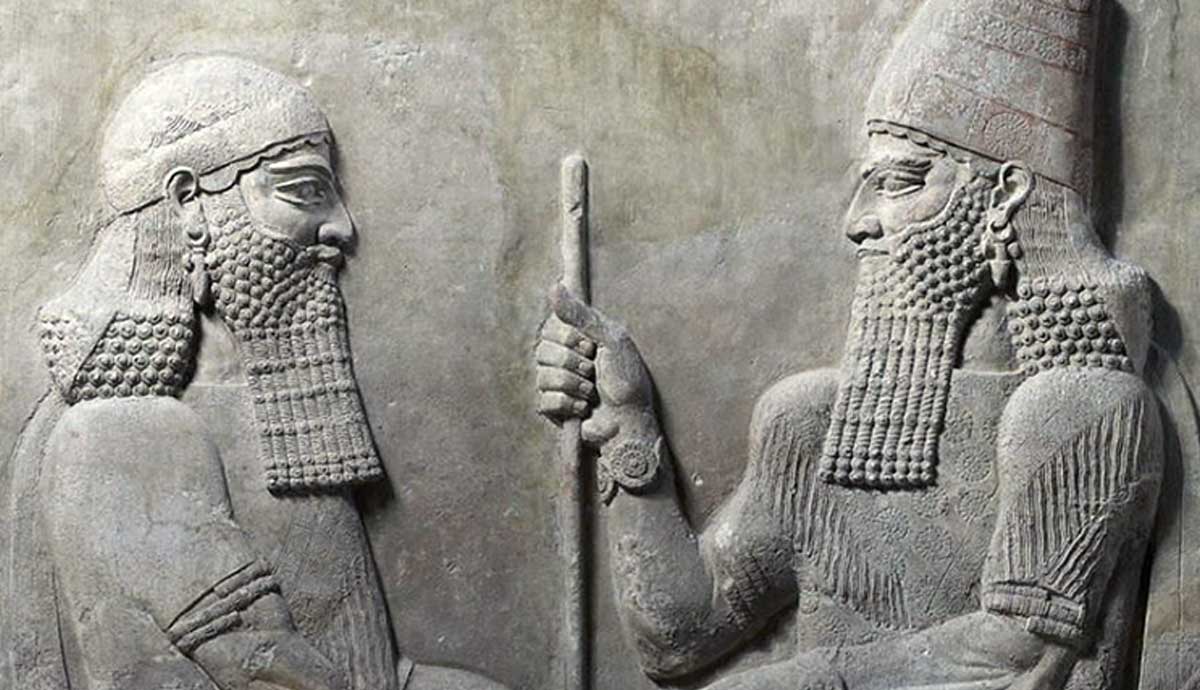
The Amorites were a Bronze Age people who were prevalent in the Levant and Near East. But for over a century, historians and archaeologists have debated if they can even be considered a “people” in an ethnic or political sense. Early theories held that the Amorites were a cohesive people who built an empire, while more recent ideas posit that they represented a way of life. Either way, it cannot be denied that the people known as the Amorites left an indelible mark on the ancient Near East. The states of Qatna, Yamhad, and Mari were all started by Amorites, but the Amorites’ most notable state was in Babylon. The Amorites of Babylon established the 1st Dynasty of Babylon, from which the famous ruler Hammurabi brought a written law to Mesopotamia.
Uncertain Origins

While there are many things we can say for certain about the Amorites, their origins are a subject of debate. Near Eastern studies only became a true discipline in the 19th century with the advent of modern archaeology methods. As the material culture of the ancient Near East was uncovered by archaeologists, philologists deciphered the many languages of the region. By the late 19th century, scholars knew about a group known as the Amorites, but their nature was still unclear. Esteemed American Assyriologist Albert Clay published the book The Empire of the Amorites in 1918, which attempted to answer this riddle. Clay argued that the Amorites were a defined people/ethnic group with a specific language and culture, referring to them collectively as an “empire.”
Although Clay’s scholarship opened the door to understanding the Amorites, more recent scholars have taken a more nuanced view when defining them. Archaeologist Daniel Fleming has argued that they were not a people in any ethnic or political sense. He wrote that the Amorites were a “class of people defined by mode of life” and “not by region origin.” George Barton anticipated elements in Fleming’s theory in 1925, writing that the Amorites emerged as mercenary soldiers and renegades of “mixed character.”

The origins and nature of Amorite culture may be murky, but more is known about the Amorite language. Despite what Fleming has argued about the nature of Amorite culture, he admits that there was an Amorite language. Computer-based research in the early 1980s identified 5,922 Amorite words in the Akkadian language, demonstrating that it was a distinguishable language. The research has revealed that Amorite was a Semitic language from the West Semitic branch of the family, along with all other Semitic languages except for Akkadian. Unfortunately, when the Amorites established dynasties throughout the Near East, they wrote their documents in the local languages, and only occasionally did some of their words seep into the texts.
The earliest historical records that mention the Amorites come from the Ur III Dynasty in Mesopotamia (c. 2112-2004 BCE). The Ur III Sumerian cuneiform texts refer to them as Martu, and it appears their initial migration was peaceful as pastoral people. It was also during this time that they dispersed throughout Mesopotamia and the Levant, later creating several dynasties. It must be pointed out that even at this early point, the Amorites were mixing with other people in the Near East. As the Amorites mixed with other Semites in Mesopotamia and Hurrians in the Levant, what constituted “Amorite culture” became fairly muddled.
Amorite Culture?

Even if one were to assume the position that the Amorites were a definite ethnic group, it would still be difficult to identify an “Amorite culture.” Religion would be one of the logical places to start, but problems are immediately apparent. Modern scholars have associated the god Dagan with the early 2nd-millennium Amorites due to many kings using versions of the god’s name. But Fleming has pointed out that Dagan was not exclusive to the Amorites. Another potential Amorite god was known as Amurru or Martu. Martu is mentioned in a number of texts, often with a sickle sword, yet he was not always the primary deity in Amorite dynasties. As will be discussed later, the term Martu also referred to a location, possibly the homeland of the Amorites. It is fitting that a people as mysterious as the Amorites would have such a word in their vocabulary.
Excavations at the Amorite city of Alalakh have further confounded the search for Amorite culture. The evidence shows that the Amorites from this city worshiped both Mesopotamian and Syrian deities. Excavations have uncovered a temple dedicated to the Mesopotamian goddess of love and war, Ishtar. The Syrian storm god, Hadad/Hadada/Addadu, was also important to the Amorites of Alalakh, as his name was invoked to seal treaties. Hadad was perhaps the most important Amorite god in Syria, making several appearances in the Old Testament, such as Genesis 36:35 and I Kings 11:14. Yet as important as Hadad was to the Amorites of Syria, many non-Amorites worshiped him under different names.

There is also no “Amorite style” of art and architecture that can be defined and separated from greater Mesopotamian art and architecture. Therefore, the only cultural element that modern scholars can say with certainty came exclusively from the Amorites was some vocabulary. The Amorites’ cultural influence on ancient Mesopotamia may have been negligible, but their political influence was immense.
The Amorites and Qatna, Yamhad, and Mari

The Amorites established several states in the Levant and Mesopotamia, including at Larsa, Ebla, Eshnunna, and Isin. The most influential Amorite-based states were Qatna, Yamhad, and Mari. Qatna was a city located in western Syria that became the home of a powerful Amorite dynasty in the 3rd millennium BCE. It was independent through the Middle Bronze Age but fell under the hegemony of the Mitanni Kingdom in the early 15th century BCE. In the late 14th century, the Hittites conquered and destroyed the city, eliminating Amorite rule.
Not far from Qatna, in the ancient city of Aleppo, Amorites started another kingdom that became known as Yamhad. The Yamhad Dynasty began in the early 2nd millennium BCE until the Hittites conquered it in 1595 BCE. Notably, many of the early Yamhad rulers acknowledged their Amorite heritage in texts. The Yamhad kings developed strong diplomatic connections with other Amorite-descended dynasties in the region, especially those from Mari.

Mari was located on the Euphrates River in northern Mesopotamia, about 15 miles north of the modern Syria-Iraq border. The archaeological record shows that it was founded at the end of the 4th millennium BCE and settled later by Amorites. The Amorites who settled in Mari were known as the Sim’alite branch. The Amorites built a dynasty that peaked in political power from about 2600 to 2300 BCE but lasted until the 18th century BCE. Mari is important because an archive of about 25,000 Akkadian cuneiform tablets was discovered there, which has given modern scholars insight into ancient Mesopotamia and Syria. Fleming notes that the term “Amurru” was used in several Mari texts, but its meaning is a source of debate. Some modern scholars believe that it referred to an Amorite-based state in Syria, while others think it was a reference to the Amorite language. Without more information, the matter will probably never be settled, although the texts provide a window into the geo-political situation of the Near East.
Most of the Mari archives are from the rule of the Mari king Zimri-Lim (ruled c. 1775-1762 BCE). Zimri-Lim aligned Mari with the Yamhad Dynasty against the city-state of Eshnunna, which possibly also had Amorite origins. Mari lost the first war against Eshnunna but then gained a powerful ally in the 1st dynasty of Babylon. The Mari-Babylon alliance defeated Eshnunna in 1766 BCE, changing the geo-political situation in Mesopotamia in the process. Not long after celebrating the victory over Eshnunna, the Babylonians turned their swords on Mari.
The First Dynasty of Babylon

Among all of the Near Eastern dynasties started by the Amorites, none were more important than the kingdom of Babylon (c. 1894-1595 BCE). As the Amorite tribes fanned out across the Near East, establishing dynasties in the process, some settled in the region of middle Mesopotamia. This region was rather inconsequential at the time, with most of the power being wielded from the south, but this situation soon changed. The 1st dynasty of Babylon was started by Amorites, which is evidenced by the names of the first two kings: Sumuabum and Sumulael. Later kings of the dynasty adopted Akkadian names, and Akkadian cuneiform was the official language of the government.
Despite quickly integrating into the Mesopotamian mainstream, the rulers of the 1st dynasty of Babylon did not completely abandon their Amorite heritage. Even after later rulers took Akkadian names, they used the term Martu to refer to lands in the West. This may not have reflected a real place by this time, but Gelb argued that it was more of a tradition that acknowledged their past, possibly where their ancestors originated. More recently, other scholars have argued that the 1st dynasty of Babylon kings incorporated their Amorite background into their overall identity.
Hammurabi (ruled c. 1792-1750 BCE), the most famous of all the First Dynasty kings, claimed to be “King of the Amorites,” among other epithets. Perhaps somewhat ironically, it was Hammurabi who put an end to Mari and all of the other Amorite-descended states when he conquered Mesopotamia.
The Late Bronze Age Amorites

By the start of the Late Bronze Age around 1550 BCE, the Amorites were thoroughly mixed with the other peoples of the Near East. Some have argued that the Hyksos, who invaded Egypt around 1650 BCE and ruled the Delta for about 100 years, were Amorite. Unfortunately, there is no evidence to prove this theory, and it is just as likely that the Hyksos were Canaanite in origin.
Redford believes that another possible Late Bronze Age Amorite state was the kingdom of Amurru. The actual presence of a place called Amurru was discussed earlier, but this was a state that was formed only in the Late Bronze Age. It is questionable if it had any link to the Amurru/Martu mentioned in much earlier texts. The Late Bronze Age Amurru served as a buffer state between the Egyptian and Hittite empires in the 15th century BCE, although there is no direct evidence to prove it was Amorite descended. The Old Testament also mentions the Amorites in the context of the Exodus, which most Biblical scholars believe took place in the Late Bronze Age. The notable references include Deuteronomy 3:8-11 and Joshua 2:10, while Joshua 10:5-6; 26 mentions five Amorite kings, including Japhia of Lachish. Fleming has argued that these texts may be anachronistic references to an earlier period, as no Egyptian or Hittite texts corroborate these kings.

The importance of the Amorites in the history of the ancient Near East is far from being completely understood. The Amorites’ origins and even their classification as an ethnic group will likely continue to be argued, but there is no doubt they were influential. The Amorites founded many dynasties that played a major role in the development of the Near East. Eventually, though, they merged with other people, and their influence was all but gone by the Late Bronze Age.










